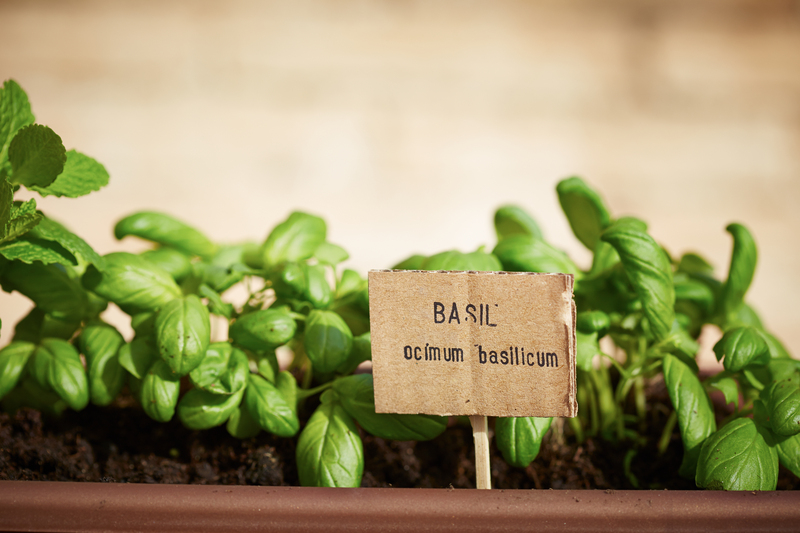Shield Your Garden: Effective Measures Against Severe Weather
Posted on 24/05/2025
Shield Your Garden: Effective Measures Against Severe Weather
Gardens are cherished sanctuaries, offering beauty, tranquility, and nourishment for both people and wildlife. However, extreme weather poses a significant threat to these green spaces. From relentless storms and hail to scorching heat waves and biting winters, protecting your garden requires a strategic approach. In this comprehensive guide, we will explore the most reliable and innovative methods to shield your garden against severe weather and maintain its health year-round.

Understanding the Impact of Severe Weather on Gardens
Severe weather can devastate a garden in a matter of hours. The damaging effects may include:
- Flooding: Waterlogged soil and root rot
- Hail: Shredded leaves and broken stems
- High Winds: Uprooted plants and lost soil
- Excessive Sun/Heat: Scorched plants and evaporated moisture
- Extreme Cold: Frost-damaged or killed plants
Proactive Planning: The First Defense
1. Choose Weather-Resilient Plants
One of the best ways to create a storm-proof garden is by selecting plants that are naturally adapted to your local climate. Native or climate-resilient species require less intervention and are built to withstand the challenges of your specific weather patterns. Here are some tips:
- Research local flora: Consult local plant nurseries or extension offices for recommended species.
- Prioritize perennials: Many perennials develop strong root systems, making them more resistant to storms.
- Drought- or heat-tolerant options: For hot climates, choose plants like succulents, agaves, or lavender.
- Wind-resistant options: Grasses, bamboo, and hardy shrubs handle strong gusts better than fragile annuals.
2. Strategic Garden Layout for Protection
A well-designed layout can help shield your garden against severe weather. Consider these strategies:
- Windbreaks: Plant dense hedges or install fencing on the windward side of your garden. Good choices include evergreens like arborvitae or laurel.
- Terracing and Raised Beds: In flood-prone zones, raised beds or terraces help divert water and avoid root rot.
- Mulching pathways: Adds a layer of protection against soil compaction from heavy rain.
Physical Barriers: Protecting from Storm Damage
3. The Power of Mulching
Mulching is a simple but highly effective way to shield your garden from the extremes of weather. Mulch acts as an insulating blanket, providing several benefits:
- Temperature regulation: Helps maintain a stable root temperature in both hot and cold weather.
- Moisture retention: Conserves water in drought conditions and prevents soil erosion during storms.
- Weed suppression: Reduces competition for nutrients.
4. Garden Structures: Row Covers, Cloches, and Greenhouses
Installing protective structures is a powerful way to shield your garden from severe weather threats:
- Row Covers and Tunnels: Lightweight fabric row covers protect seedlings from wind, frost, and pests.
- Cloche: A bell-shaped glass or plastic cover placed over individual plants provides exceptional frost and hail protection.
- Greenhouses: These offer the ultimate shield, ensuring you can garden year-round regardless of outside conditions. Modern mini-greenhouses are affordable and easy to assemble.
- Cold frames: Act as mini-greenhouses for hardening off seedlings or overwintering sensitive plants.
5. Fencing and Netting Solutions
Sturdy fencing not only keeps animals out but can also serve as a formidable barrier against heavy winds and flying debris. For hail-prone areas, install hail netting directly over vulnerable beds to minimize damage.
- Install windbreak fencing: Wood, bamboo, or synthetic panels absorb and redirect strong gusts.
- Use bird/hail netting: Netting protects fruits and tender tops from both hail and animal pests.
Water Management: Flood-Proofing and Drought Resistance
6. Smart Drainage Systems
Effective water management is paramount in safeguarding your garden from both drought and flooding. Strategies include:
- French drains: Direct excess water away from planting areas using gravel-filled trenches with perforated pipes.
- Rain gardens: Plant water-loving species in a shallow basin to collect and filter runoff.
- Rain barrels: Capture roof runoff for use during dry periods. This eco-friendly solution saves money and keeps plants hydrated during heatwaves.
7. Irrigation Solutions for Dry Spells
During extreme heat and drought, efficient watering is essential. Implement these drought-proofing tips to protect your garden during heatwaves:
- Drip irrigation: Delivers water directly to the root zone, minimizing waste.
- Soaker hoses: Ensure even, low-pressure watering across plant beds.
- Water in the early morning or evening: Reduces evaporation loss and gives plants adequate hydration before the hottest parts of the day.
Combating Heatwaves: Keeping Plants Cool
8. Shade Solutions for Sweltering Days
Prolonged high temperatures can stress, wilt, or even kill your garden plants. Shield them with these heat-busting techniques:
- Shade cloth: Suspend breathable fabric (found at garden centers) above beds to reduce sunlight by 40-70% without blocking air flow. Adjustable shade is ideal for container gardens.
- Temporary shade structures: Use old sheets, tarps, or market umbrellas for a quick fix during sudden heatwaves.
- Living shade: Train climbing plants on trellises to shield more sensitive species below.
9. Mulch and Soil Amendments for Temperature Control
In addition to traditional mulch, using water-absorbent soil additives (like hydrogels) further insulates roots and preserves water. *Maintain at least 2-3 inches of organic mulch year-round to stave off temperature extremes.*
Defending Against Frost and Freeze
10. Frost Covers and Insulation
Late spring or early autumn frosts catch many gardeners off-guard. To proactively protect your garden from sudden cold snaps:
- Frost blankets: Place breathable fabric over vulnerable plants overnight, securing edges with rocks or garden staples.
- Insulating with leaves or straw: Pile several inches of organic matter around the base of perennials and shrubs for root protection.
- Mini-greenhouses (or cold frames): For small gardens, these offer a quick and reusable shield against frost.
11. Watering Before Frost
It may sound counterintuitive, but moist soil holds heat better than dry soil. *Water thoroughly before a frost is expected* to help the earth retain warmth, reducing damage to roots and stems.
Emergency Preparedness for Extreme Weather Events
12. Staking and Securing Plants
Before predicted storms or heavy winds, make sure to stake tall plants and secure garden structures:
- Use sturdy stakes (wood, bamboo, or rebar) and tie plants gently but firmly with soft twine.
- Check trellises and supports for stability. Reinforce if necessary.
- Move pots and hanging baskets to sheltered areas, like garages or covered patios.
13. Removing Debris and Loose Material
Flying debris in a storm can cause more damage than wind alone. Clear your garden of loose objects, empty pots, and garden tools ahead of time to minimize hazards.
14. Post-Storm Recovery Steps
Even with diligent planning to shield your garden from severe weather, some damage is inevitable. Quick post-storm actions can mean the difference between recovery and loss:
- Assess and remove damaged plant material promptly to prevent disease.
- Stake or replant uprooted species as soon as possible.
- Address compacted or eroded soil by aerating and adding fresh compost.
- Monitor for signs of stress, disease, or pests in the weeks after a major event.
Smart Gardening: Embrace Technology and Community
15. Weather Apps and Garden Alarms
In today's digital age, shielding your garden from storms is easier with the right technology. Use smartphone apps to receive severe weather alerts and schedule reminders for protective actions--such as covering plants before frost or watering during a heatwave.
16. Community Resources and Support
Join local gardening groups or online forums for real-time updates and advice tailored to your neighborhood. Community gardens often share resources like row covers or storm shelters for plants.

Preventative Measures: Year-Round Garden Health
The most resilient gardens are healthy ones. Maintain regular practices to ensure your plants can better resist and rebound from adverse weather:
- Regular pruning: Reduces wind load and prevents heavy snow accumulation on branches.
- Soil enrichment: Healthy, well-fed plants withstand stress better.
- Seasonal garden cleanups: Remove diseased materials to prevent the spread of pests post-storm.
- Rotate crops: Prevents pest buildup and improves soil structure.
Conclusion: Weather-Proofing Your Garden For The Future
Severe weather events are becoming increasingly common and unpredictable. While you can't control the forecast, you can shield your garden through proactive measures, planning, and rapid response. By selecting resilient plants, building physical barriers, utilizing smart water management, and being prepared for emergencies, you'll foster a thriving garden that weathers any storm.
*Stay one step ahead of Mother Nature--implement these effective measures to shield your garden against severe weather and enjoy lush, healthy plants all season long!*
```
